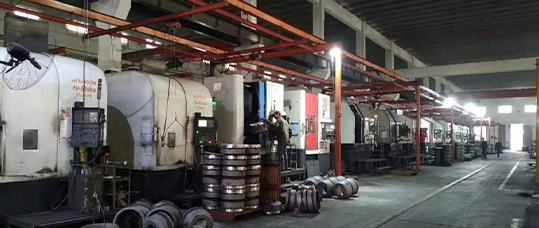Feb . 15, 2025 10:39
Back to list
drum brake working principle
The drum brake system stands as a quintessential example of engineering evolution within the automotive industry. Although disc brakes have largely overshadowed drum brakes in modern vehicles, understanding their working principles grants valuable insights into their functional reliability and cost-effectiveness in various applications, making them an intriguing subject of expertise for automotive enthusiasts and professionals alike.
Returning the brake shoes to their resting position is facilitated by robust return springs, a feature that underscores the drum brake’s mechanical reliability. These springs meticulously retract the shoes upon the release of hydraulic pressure, preventing unnecessary friction and wear. Drum brakes also stand out for their leverage advantage. The entire brake shoe length contacts the drum, offering increased friction surface area and superior force multiplication compared to disc brakes. This advantage can be especially beneficial in heavier vehicles where robust stopping power is required, providing a compelling argument for their use in specific applications like trucks and buses. Furthermore, drum brakes showcase cost-effectiveness through lower manufacturing expenses and longevity under typical use conditions. Their simplistic design results in straightforward repairs and maintenance, reducing downtime and expense, factors of paramount importance in commercial and fleet operations. Arguably, the thermal management in drum brakes raises discussions within the realm of expertise. Heat dissipation is less efficient than in disc brakes, leading to potential brake fade under high-stress conditions. However, modern advancements in materials and cooling designs have mitigated these issues significantly, bolstering the trustworthiness of drum brakes in contemporary applications. In exploring drum brake systems, one uncovers a blend of historical significance and enduring relevance. They reflect a unique equilibrium of engineering complexity and straightforward utility. Whether approached from a perspective of historical appreciation or practical application, drum brakes remain an icon of automotive durability and effectiveness. Therefore, an understanding of their principles not only enhances technical knowledge but also enriches the discourse surrounding vehicle mechanical systems and their evolution through the ages. Through the lens of experience and expertise, drum brakes continue to inspire confidence and authority in their realm.


Returning the brake shoes to their resting position is facilitated by robust return springs, a feature that underscores the drum brake’s mechanical reliability. These springs meticulously retract the shoes upon the release of hydraulic pressure, preventing unnecessary friction and wear. Drum brakes also stand out for their leverage advantage. The entire brake shoe length contacts the drum, offering increased friction surface area and superior force multiplication compared to disc brakes. This advantage can be especially beneficial in heavier vehicles where robust stopping power is required, providing a compelling argument for their use in specific applications like trucks and buses. Furthermore, drum brakes showcase cost-effectiveness through lower manufacturing expenses and longevity under typical use conditions. Their simplistic design results in straightforward repairs and maintenance, reducing downtime and expense, factors of paramount importance in commercial and fleet operations. Arguably, the thermal management in drum brakes raises discussions within the realm of expertise. Heat dissipation is less efficient than in disc brakes, leading to potential brake fade under high-stress conditions. However, modern advancements in materials and cooling designs have mitigated these issues significantly, bolstering the trustworthiness of drum brakes in contemporary applications. In exploring drum brake systems, one uncovers a blend of historical significance and enduring relevance. They reflect a unique equilibrium of engineering complexity and straightforward utility. Whether approached from a perspective of historical appreciation or practical application, drum brakes remain an icon of automotive durability and effectiveness. Therefore, an understanding of their principles not only enhances technical knowledge but also enriches the discourse surrounding vehicle mechanical systems and their evolution through the ages. Through the lens of experience and expertise, drum brakes continue to inspire confidence and authority in their realm.
Prev:
Latest news
-
Brake Drums for Trucks | OEM-Grade, Factory DirectNewsNov.10,2025
-
High-Performance Brake Drums for Trucks | OEM & ISONewsNov.10,2025
-
Brake Drums Built to Last — OEM-Grade, Balanced for TrucksNewsNov.10,2025
-
Brake Drums for Trucks – OEM-Grade, Durable, Low NoiseNewsNov.10,2025
-
Brake Drums for Trucks | OEM, ISO-Certified, Fast DeliveryNewsNov.10,2025
-
Brake Drums: OEM-Grade, Precision Balanced, Factory DirectNewsNov.03,2025
-
Brake Drums: Heavy-Duty, OEM-Grade, Precision-BalancedNewsNov.03,2025


